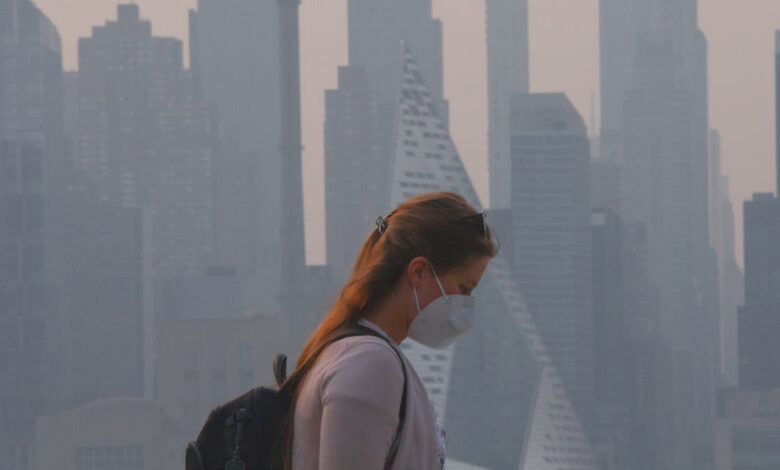Is Air Pollution Making You Sick?

There are a number of different types of air pollutants, but experts typically list two major categories: particulate pollution and ozone.
Particulate pollution, which is made up of inhalable microscopic particles emitted from a variety of sources including wildfires and fossil fuels, can peak at any time of the year, depending on weather conditions and how people use energy.
On the West Coast, these levels often spike over the summer because of wildfires, says John Balmes, MD, a professor of medicine at the University of California, San Francisco, and a spokesperson for the American Lung Association (ALA). Wildfires (this time originating in Canada) have caused the recent record-setting spikes in particulate pollution on the East Coast as well. And it’s early in fire season; air pollution events could continue even after current conditions subside. This is the worst start to the Canadian wildfire season on record.
Wildfire season is starting earlier and stretching later in some places, but ozone levels always spike during the summer. That’s because ozone is what’s called a “secondarily generated pollutant,” Brook says. When sunlight hits certain pollutants—including those emitted by power plants, industrial boilers, air conditioners, and perhaps most importantly, cars—it creates ozone.
Those pollutants are emitted as people turn on their ACs to try to stay cool and as fumes are pumped out of their vehicle’s exhaust pipes as they drive to work. Then they’re cooked in the hot sun, creating ozone levels that rise throughout the day. Those levels peak at some point in the afternoon and start to fall again after the sun goes down. Long, sunny days will have more ozone. That’s why walking outside or trying to jog on some particularly hot days can feel like you’re trying to breathe through a pillow.
Ozone and particulate pollution are linked to cardiovascular illness and respiratory problems. Particulate pollution is more directly linked to events like heart attacks, Brook says, while there’s more evidence that ozone affects lung diseases like asthma and chronic obstructive pulmonary disease (COPD). That might help explain why breathing problems are often exacerbated on hot summer days.




